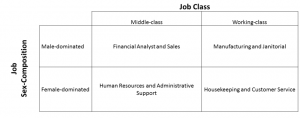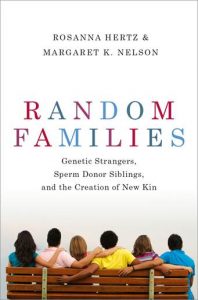Years ago, when interviewing a woman in a study of stepfamilies, I (Coleman) was struck by comments she made about her ex-stepdaughter. This woman had helped raise the girl from early childhood (age 2) into early adolescence. The father of this girl had physical custody of her because the child’s mother suffered from a drug addiction. The stepmother I interviewed and the father of this girl had divorced when the stepdaughter was 12 or 13 and the woman never saw the child after that. In the interview, the former stepmother shared through tears that after the divorce her ex-stepdaughter had called and written several letters begging her to get in touch, but she had not, she told me, because “it didn’t seem appropriate.” This was during an era when divorced couples generally were expected to sever all ties and not cooperate with each other in any way – after all, the thinking went, if the couple could get along well, then why had they divorced? When remarried couples divorced, children nearly always went with the biological parent and often never saw or interacted with their stepparent or stepsiblings again. This “clean break” of stepfamily ties after divorce may have seemed “natural” and “normal” to many adults – after all, stepparents were neither genetically nor legally related to stepchildren, but to some stepchildren and stepparents, such as the woman I interviewed and her ex-stepdaughter, these breaks were emotionally painful because they ended long-term family relationships. For example, the stepmother I interviewed had raised her stepdaughter for a decade and was likely an important figure in the girl’s life. The former stepmother’s comment that getting in touch with her stepdaughter “didn’t seem appropriate” nagged at me for years before our research team decided to explore what we called “ex-steprelationships.”
Ex-step kin are not rare. In the United States, about one-third of children will spend part of their childhood living with a stepparent. The divorce rate among remarriages is higher than that of first marriages, so a lot of these children will go through multiple family transitions. Maintaining ties with ex-stepparents could help children in terms of resources, relationships, and emotional stability. Our legal systems, however, generally do not recognize rights or responsibilities for ex-stepparents after a divorce. Without legal precedents, ex-stepkin are left on their own to figure out their postdivorce relationships. To explore this phenomenon, we launched a series of studies in which we interviewed former stepkin (stepchildren, stepparents, and stepgrandparents) using grounded theory methods in which we asked open-ended questions and let the study participants tell us what was important to them.
In the first study, we interviewed 41 young adults who had been stepchildren and who had experienced a parent’s remarriage breakup. Our questions focused on their experiences with former stepparents both before and after the divorce. We found three perspectives about ex-stepparents from stepchildren, which we labelled claimed, disclaimed, and unclaimed.  About 25% of the young people we interviewed continued to claim their stepparent as kin after the divorce. Another 25% had claimed the stepparent as kin during the remarriage but cut all ties with them after the divorce (i.e., they disclaimed the stepparent). Finally, about half had never claimed the stepparent as kin (i.e., the unclaimed).
About 25% of the young people we interviewed continued to claim their stepparent as kin after the divorce. Another 25% had claimed the stepparent as kin during the remarriage but cut all ties with them after the divorce (i.e., they disclaimed the stepparent). Finally, about half had never claimed the stepparent as kin (i.e., the unclaimed).
The ex-stepchildren who continued to claim their stepparents and those who had claimed them during the remarriage and disclaimed them after divorce had spent a lot of time with the stepparent when the remarriage was going well. During the remarriage, they felt close to their stepparents and considered them to be a family member if not a parent.
The ex-stepchildren who still claimed their stepparents as kin after divorce got help from parents in doing so. Their parents either encouraged them to stay in touch with ex-stepparents or were neutral about it, and thus did not discourage them from doing so. Those who had half-siblings from the dissolved remarriage were more likely to stay in contact with ex-stepparents than those who did not. The former stepparents were open to continuing to be in a relationship with them and did what they could to keep lines of connection open. Some ex-stepchildren waited until after the post-divorce flames and hostility had died down before becoming involved again with their stepparent. One man waited five years before reconnecting with his stepfather, and they rekindled a very close relationship. The ex-stepchildren who continued to claim their stepparent after the remarriage ended said that they continued to receive support from their ex-step in the forms of help with college expenses, other financial help, and the kinds of assistance youn g people seek from parents and parental figures (e.g., advice, emotional support).
g people seek from parents and parental figures (e.g., advice, emotional support).
The ones who disclaimed their stepparents, did so almost immediately after the end of the remarriage, often because of loyalty to their biological parent. Some said they cut off ties with the stepparent because their parent had revealed negative information about the ex-stepparent. These disclaiming ex-stepchildren took the side of their biological parent, and although it often was emotionally painful for them to do so, they quickly and decisively cut off ties to their ex-stepparents. These young people felt sad about the losses they experienced as a result of this divorce, and they often were still angry at the stepparent, whom they generally blamed for the divorce. In some cases, ex-stepchildren wished they could resolve some of their feelings and wanted to reconnect with the ex-stepparent, but did not know how to make this happen, and even felt ambivalent about whether it should or not.
The last group of ex-stepchildren, who had never claimed their stepparents as kin, was older when their parent remarried, the remarriage was relatively short, and the stepparent and stepchild had spent little time together. Some stated they had always disliked the stepparent. These ex-stepchildren felt no sense of loss and some were even relieved after their parent’s divorce from the stepparent. They had made no attempts to connect with their stepparent after divorce and neither had their former stepparent tried to contact them.

We were encouraged in this study that none of the ex-stepchildren thought that it was inappropriate to continue these stepfamily ties. Some of the claiming ex-stepchildren in our study noted, however, that a lack of social norms and expectations for the ex-steprelationships after a remarriage ends made them unsure at times about what to do. Maybe these young people and their stepparents and parents are creating new norms, but the absence of guidelines or social support is unfortunate, at least for some ex-stepchildren who claimed their stepparents as parents during the remarriage; ex-stepchildren who continued to claim stepparents as kin cited many advantages to maintaining those relationships.



 Stephanie Coontz offers reflections on the Council on Contemporary Families brief,
Stephanie Coontz offers reflections on the Council on Contemporary Families brief, 







